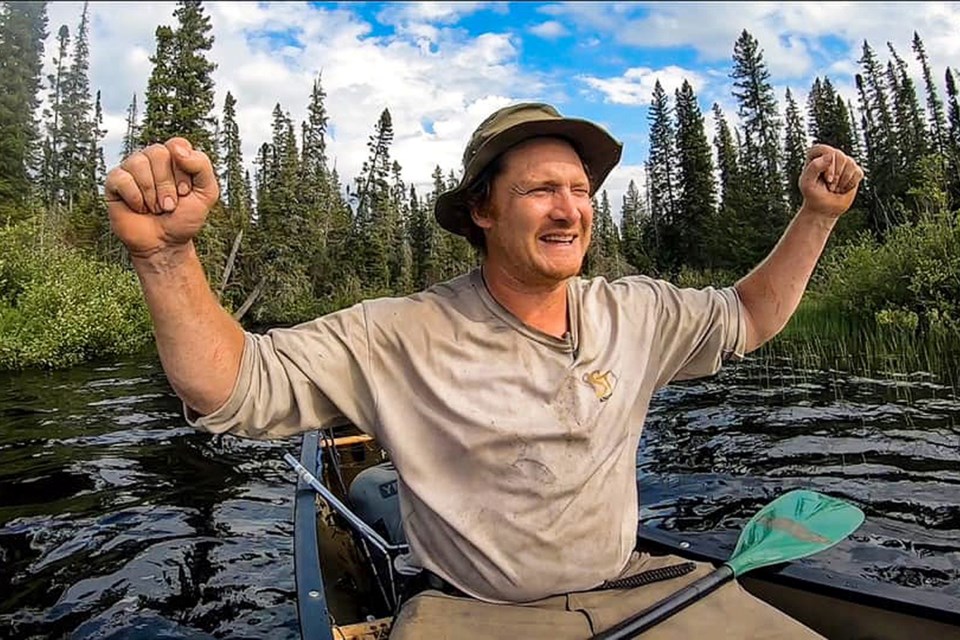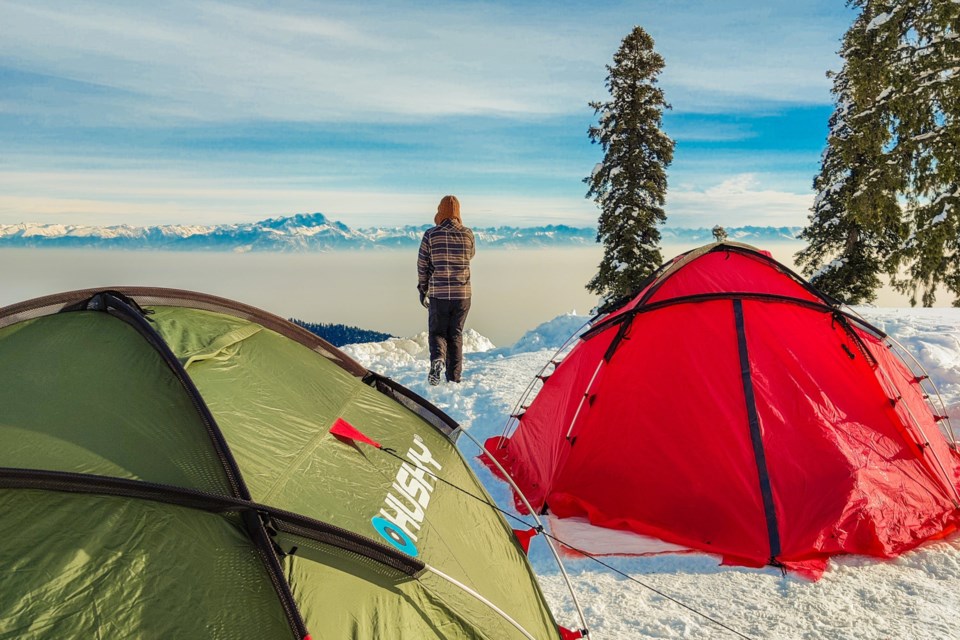A quick check on social media these days shows more and more Northerners taking advantage of living in Northern Ontario and finding how to enjoy winter.
Heartier souls have already begun planning for a popular Northern Ontario adventure — winter camping. Some people will get by with a tent, while the more adventurous might try a lean-to or a quinzhee. Others will spoil themselves and set up a prospector tent complete with a wood stove.
One can make the weekend more special by making it an ice-fishing getaway.
Jim Baird of Magnetewan (yes, it's part of Northern Ontario) is an outdoor adventure expert. He is one of those people who enjoys outdoor camping, travel and just doing stuff regardless of the weather.

Followers of Baird's YouTube Channel will remember that he left his comfortable home in February and drove across Canada to the Yukon two years ago during the height of winter. And it was a camping trip with his wife and child with a mini-trailer.
Closer to home, Baird also spent 10 days on an overland winter hike from the Kukagami area to Temagami. It was to produce a two-hour video, Life On The Winter Trail.
So when Baird talks about how to do things in the outdoors, people listen.
Earlier this year, Baird produced a guide on the things you might want to know as you prepare yourself for you own winter adventure: The Ultimate Guide to Outfitting your Winter Camping Trip.
Baird said winter is something to be enjoyed, but not at the expense of being unprepared.
"The cold temps and heavy snow means winter is not a good time or a fun time to practice raw survival skills with little gear in most backcountry scenarios," said Baird.
"Naturally, knowing some winter survival skills will make you safer in case something does go awry, but having the right gear and knowing how to use it can in fact make your stay quite warm and comfortable in the winter woods."
Baird had plenty of advice for clothing choices.
Base Layers: Dressing in layers, top and bottom, is a good idea. Avoid cotton, particularly next to your skin and choose poly materials or merino wool for your base layers.
Gloves & Mitts: Bring insulated work gloves for finer work around camp and a heavy duty pair of mitts. Mitts will keep your hands warmer than gloves and avoid using glove liners in your mitts because the skin on skin contact of your fingers is the warmest.
Pants: We’ve already covered long johns under base layers. On top of that, you’re going to want to wear army surplus wool pants, lighter weight wool blend pants, windproof fleece pants, fleece-lined canvas pants, a fleece-lined bib/overalls, or fleece-lined quick dry (nylon outer) pants. Fleece-lined jeans will work, too.
Windbreaker Pants & Jacket: If you’re faced with strong winds while trekking, an insulated bib or heavy parka is going to be too warm, but your wool pants and sweater will be too cold to wear as your outer layer. In situations like this, you’re going to want an outer wind breaking layer. Go with nylon or polyester and note that water resistant windbreakers provide the most breathability which is key. Heavy waterproofing isn’t necessary in the depths of winter.
Footwear: Always choose boots with a removable liner and a low temperature rating, such as Baffin Snow Monster Boots. If you’re going with a more traditional-style mukluk (your warmest option), consider bringing a pair of Neos overshoes to wear overtop of them when faced with slush on lakes or early spring conditions when the snow is very wet. For inside the tent and immediately around the tent, bring a pair of down booties.
Socks: Wearing two pairs is a good idea for warmth and blister resistance, but don’t wear too many pairs of socks or your boots will be too tight and your feet will actually get colder due to a lack of circulation.
Jackets/ Parka: Large and heavy down-filled parkas with fur-lined hoods, like the Snow Mantra from Canada Goose, are among the warmest options for snowmobiling or activities with little movement like ice fishing. They’re bulky and heavy, and just too hot when you’re moving on a winter trek.
Anorak & Puffer: An Anorak is basically a parka that typically pulls over the head. They also extend down further on the body than other jackets, as they typically continue down below the hips. The absence of a zipper means less heat escapes while less wind gets in through a zipper at the same time. Pound for pound, anoraks offer more warmth with less weight and bulk than zippered jackets.
Sweaters: Go with wool, fleece or a wool-fleece blend.
Other Wearables: Balaclava, (so your face doesn’t freeze), neck warmer, (because about as much heat escapes from your neck as from your head), beanie (toque), fur hat, sunglasses, (because in the winter, the sun comes from above and below as it reflects off the snow and snow-blindness can be a real concern), and ski goggles, if the weather’s bad and there’s a lot of blowing snow.
The information above carries the basic information you can use for planning a winter weekend getaway.The full text of Baird's winter list can be found here:
If you're not as enthusiastic about all this as Jim Baird is, don't worry, he has advice for the "clumsy intermediate winter day tripper" as well.
Happy camping!
Len Gillis is a reporter at Sudbury.com. Bold is made possible by our Community Leaders Program.



